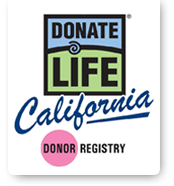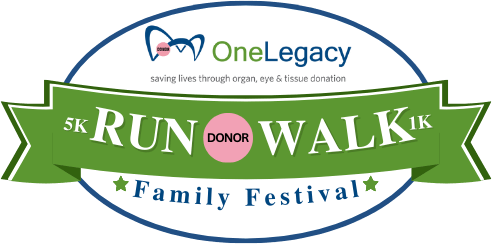Presumed Consent is an Attractive
Concept with Unattractive Results
The waiting list for organ transplants has exceeded 117,000[i] and is growing roughly 10% a year, despite more than 28,000[ii] transplants being performed annually, and with the diseases of aging and obesity that damage organs, this trend is expected to worsen.[iii] While prevention and medical innovation can over the next half a century reduce or even end the need for organ transplants, they can do nothing to save the lives of those suffering from organ failure today; clearly, we must make more organs available.
It is this clear-cut need that prompts well-meaning legislators, wait-listed potential transplant patients, and community-minded citizens to conclude that our forty-year-old Opt-In, Explicit Consent (EC) organ donation system is broken and needs to be fixed by implementing Opt-Out Presumed Consent (PC). After all, if we could be compelled to donate organs upon our deaths, as a country we could meet our need for organ transplants; wouldn’t we?
The Facts Suggest Otherwise:
First, 72% of Californians and 75% of Americans who can become organ donors actually donate and save lives at the time of their deaths.
Second, California’s actual donation rate of 32.3 nDPM (normalized Donors per Million population[iv]) leads the US ‘s 26.1 nDPM and every country in the world except for Spain’s 33.5 nDPM[1] Meanwhile all other countries trail donation in California and the US; whether they have Presumed Consent or Explicit Consent laws.
A review of the accompanying chart indicates the wide disparity within European Presumed Consent countries donation rates, from a high of Spain’s 33.5 to a low of Greece’s 5.7, with a simple average of 12.5 nDPM, which is insignificantly different from the Explicit Consent average of 12.1 nDPM. This finding reconfirms a British Medical Journal article that studied inter-country European donation data and found that Presumed Consent and Explicit Consent donation rate variances were not statistically definitive[v]. This insignificant difference in DPM suggests that social, cultural, and operational factors, rather than legal structures are at play. For example, of the European countries with more than 70%, Roman Catholic populations nDPM averages 16.3 while the countries with populations that are less than 70% Roman Catholic donation rates were only 9.1 nDPM; with a mix of PC and EC in each group of countries. Thus, it is very likely that religion plays a far more dominant and successful role in increasing organ donation in Europe than Presumed Consent.
Most significant in this assessment of PC vs EC is the fact that the European countries that developed and maintain presumed Consent in their laws do not rely on it to actually recover organs. A 2012 survey of practices reports[vi] that donation professionals in all of these countries require family consent prior to recovery of organs. The fact that all countries that have PC laws do not actually rely on the right of the state to take organs speaks to the public trust and autonomy issues that arise when countries seek to claim any type of property, and makes it clear that the variance in donation rates is a function of cultural and operational aspects rather than legal characteristics of their donation programs.
While these data are convincing that Presumed Consent does not improve organ donation, there are those who still suggest that California is somehow different and implementing a PC system would further improve our already impressive donation rates. However, we have some measures of our own population’s initial perception of donation that should give us pause. The significant variance between the 31%[vii] of Californians who register to be donors while applying for driver licenses and the 72% who actually donate at the time of death suggests a concern: when people are applying for a driver license a significant majority either feel under-informed, are misinformed, oppose donation, or simply do not choose to register at that time. Yet, when confronting the unavoidable end of life and the need to make final decisions, individuals and families seek and are receptive to information that prompts them to choose to donate.
Unfortunately, under a Presumed Consent system, the “Opt-Out” provision would capture people’s premature, under-informed, and unplanned decisions to NOT donate, while individuals are in the immediate process of focusing on the process of getting a driver license. And, once recorded as a “No” there is little opportunity to address misinformation and inspire individuals and families to donate; the work we in the four California OPOs help to do today that moves us from the 35% who register as donors to the 72% who actually donate.
The significance of misinformation is not merely theoretical; as reported in the 2010 Donate Life America/Astellas independent[viii] poll a shocking 52 percent of people incorrectly believe that doctors may not try as hard to save their lives if they know they wish to be organ or tissue donors, that 48 percent believe a black market exists in the U.S. for organs and tissue, and a remarkably high 61 percent mistakenly believe it may be possible for a brain dead person to recover from his or her injuries. With these serious misconceptions out there, it is very realistic to conclude that an Opt-Out, Presumed Consent decision, made early in life, without access to accurate information would lead to millions of ill-informed decisions and no chance to address these misconceptions when the opportunity to donate occurred.
So, if Presumed Consent is not the solution, how can we increase organ donation to ensure that no one dies while waiting for an organ? According to Rafael Matesanz, head of Spain’s ONT, the answer lies in its highly structured and managed transplant coordination network with intensive care transplant coordinators based at the site of the donation[ix]. Versions of this system are also used in the US, with in-house Organ Procurement Coordinators and Intensivist consultants, and have been shown to be remarkably effective, and merit expansion across all major hospitals.
While the four California OPOs can and have made great strides to a statewide 72% Donation rate and a donation rate that rivals Spain’s, we can and need to do much better in order to end deaths on the waitlist.
We must choose as providers of care, society, and as a state to invest in vigorous and targeted school-based education for teenagers before they get their first license and culturally-informed public education programs to assist recent immigrants to find the value and choose to donate as 80+% of native-born, adult Americans have already found.
It is clear that donation rates are highest across the country where multiple generations of the population have been exposed to and educated in the value of donation and transplant, with a culturally homogenous state with a long history of state and community sponsored education like our colleague OPO in Madison, Wisconsin being a prime example with a 90%+ Voluntary Consent donation rate.
One substantial step taken seven years ago in California was the establishment of the Donate Life California Registry, now the largest donor registry in the world with 9.8 million drivers registered. Adding to the value of the registry is the long-standing element of California law that recognizes that a registered choice by an individual to donate is a legally binding final wish to help others (known as First Person Consent and akin to an Advanced Directive for Health Care) which cannot be overturned by others, including family. The DLCA Registry and First Person Consent have played a significant part in our state’s donation rate being among the world’s highest. And, in 2011, the DLCA Registry was enhanced with the addition of a new “mandated choice” option that requires license applicants to choose “Yes, I want to be a donor” or “Not at this time,” and prevents simply skipping the question. Imagine how much more valuable this registry could be with a substantive schools-based public education program to help young drivers and new immigrant families to dispel myths fully understand the life-saving value of this choice.
Finally, as one ponders the imposition of a Presumed Consent system, it is worth identifying and considering if there are any models in law where the state opts to take possession of the belongings of an individual for the public good, over their possible objections. Certainly, it exists in eminent domain seizure of property (and only after exhaustive hearings). However, in areas of health care and the body, all of the actions of the past fifty years have been to ensure the right of individuals to make their own informed decisions, such as efforts that outlawed involuntary castration and laws to ensure that patients consent to the procurement and utilization of organs, tissue, and cells for research or for-profit use. And even the clear-cut public benefit of vaccination regularly runs into opposition from parents seeking personal choice. With these personal rights so vigorously protected, does anyone really feel that we should exclude organs and tissues for transplant from this same personal protection of Voluntary Consent? Should we do so knowing that our Voluntary Consent system currently is more successful than any Presumed Consent organ donation system in the world?
The four California Organ Procurement Organizations and our 54 colleagues across the country have been quite successful in helping three-quarters of those who can donate to do so in order to save thousands of lives each year. Educating and inspiring the remaining 25% of non-donors requires not legal changes to an Opt-Out, Presumed Consent system that has been shown to be less effective than our own, but rather ramped up education efforts and the active and outspoken support of this country’s leaders from across our cultural, religious, political, medical, and business communities.…because those in need of transplant come from all of our communities, races, ethnicities, and professions and we all have the power to Donate Life.
[1] . (nDPM is Donors per Million population normalized to the US death rate, which accommodates for the wide variation in death rates and donation potential across countries and regions whose death rates range from 6.0 to 12.7 deaths per thousand.)
[i] USDHHS-HRSA-OPTN National Waiting List Data: http://optn.transplant.hrsa.gov/latestData/rptData.asp; 3/31/2011
[ii] USDHHS-HRSA-OPTN National Transplant Data; http://optn.transplant.hrsa.gov/latestData/rptData.asp; 3/31/2011
[iii] U.S. Renal Data System Annual Data Report (2005); http://www.kidney.org/news/newsroom/fs_new/esrdinUS.cfm; 3/31/2011; JAMA. 2007 Nov 7;298(17):2038-47; Prevalence of chronic kidney disease in the United States http://jama.ama-assn.org/content/298/17/2038.full.pdf+html; 3/31/2011
[iv] “Investigating Geographic Variation in Mortality in the Context of Organ Donation”; Sheehy, O’Conner, Luskin, Cornell, Finn, Mone, Selck, Delmonico, American Journal of Transplantation, 2012, doi: 10.1111/j.1600-6143.2011.03981.x
[v] “Impact of presumed consent for organ donation on donation rates: a systematic review”; Amber Rithalia, Catriona McDaid, Sara Suekarran, Lindsey Myers and Amanda Sowden, British Medical Journal, 2009;338;a3162 doi:10.1136/bmj.a3162.
[vi] Transplantation, “Potential Limitations of Presumed Consent Legislation”; Boyarsky, Hall, Deshpande, Ros, Montgomery, Steinwachs, Segev; Transplantation, 2011• Volume XX, Number X, Month XX
[vii] DLA National Donor Designation Report Card; http://donatelife.net/wp-content/uploads/2012/06/DLA-Report-Card-2012-350781.pdf; accessed 1/29/13
[viii] Donate Life America/Astellas poll conducted by Survey Sampling International, 2010; http://www.donatelife.net/pdfs/DLA_Report_Card_2010_FINAL.pdf; accessed 3/31/2011
[ix] European-Hospital: The state of play in EU States; 07/01/2009; http://www.european-hospital.com/en/article/6126.html; accessed 3/31/2011








